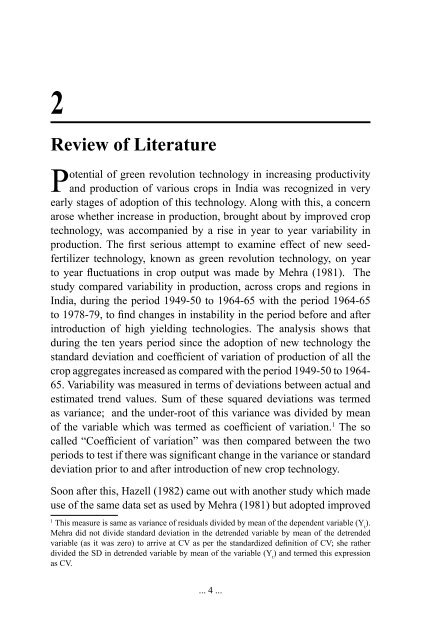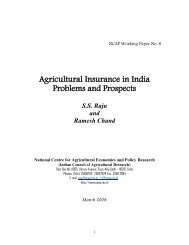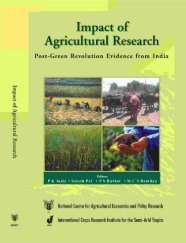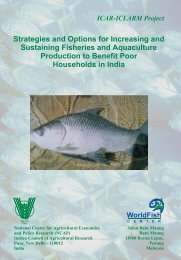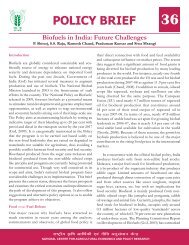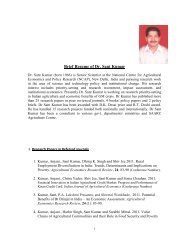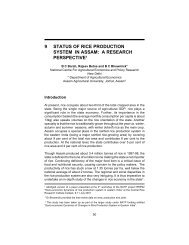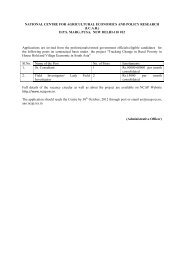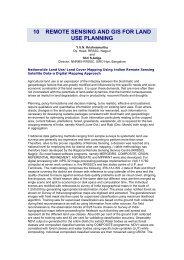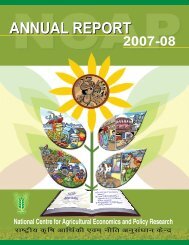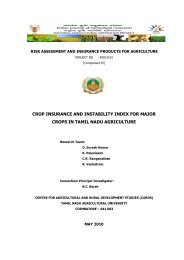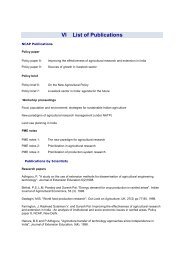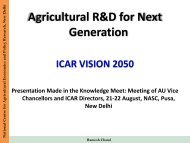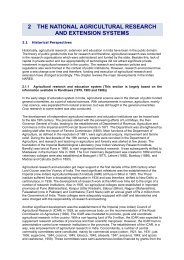Instability in Indian Agriculture - NCAP
Instability in Indian Agriculture - NCAP
Instability in Indian Agriculture - NCAP
You also want an ePaper? Increase the reach of your titles
YUMPU automatically turns print PDFs into web optimized ePapers that Google loves.
2<br />
Review of Literature<br />
Potential of green revolution technology <strong>in</strong> <strong>in</strong>creas<strong>in</strong>g productivity<br />
and production of various crops <strong>in</strong> India was recognized <strong>in</strong> very<br />
early stages of adoption of this technology. Along with this, a concern<br />
arose whether <strong>in</strong>crease <strong>in</strong> production, brought about by improved crop<br />
technology, was accompanied by a rise <strong>in</strong> year to year variability <strong>in</strong><br />
production. The first serious attempt to exam<strong>in</strong>e effect of new seedfertilizer<br />
technology, known as green revolution technology, on year<br />
to year fluctuations <strong>in</strong> crop output was made by Mehra (1981). The<br />
study compared variability <strong>in</strong> production, across crops and regions <strong>in</strong><br />
India, dur<strong>in</strong>g the period 1949-50 to 1964-65 with the period 1964-65<br />
to 1978-79, to f<strong>in</strong>d changes <strong>in</strong> <strong>in</strong>stability <strong>in</strong> the period before and after<br />
<strong>in</strong>troduction of high yield<strong>in</strong>g technologies. The analysis shows that<br />
dur<strong>in</strong>g the ten years period s<strong>in</strong>ce the adoption of new technology the<br />
standard deviation and coefficient of variation of production of all the<br />
crop aggregates <strong>in</strong>creased as compared with the period 1949-50 to 1964-<br />
65. Variability was measured <strong>in</strong> terms of deviations between actual and<br />
estimated trend values. Sum of these squared deviations was termed<br />
as variance; and the under-root of this variance was divided by mean<br />
of the variable which was termed as coefficient of variation. 1 The so<br />
called “Coefficient of variation” was then compared between the two<br />
periods to test if there was significant change <strong>in</strong> the variance or standard<br />
deviation prior to and after <strong>in</strong>troduction of new crop technology.<br />
Soon after this, Hazell (1982) came out with another study which made<br />
use of the same data set as used by Mehra (1981) but adopted improved<br />
1<br />
This measure is same as variance of residuals divided by mean of the dependent variable (Y t<br />
).<br />
Mehra did not divide standard deviation <strong>in</strong> the detrended variable by mean of the detrended<br />
variable (as it was zero) to arrive at CV as per the standardized def<strong>in</strong>ition of CV; she rather<br />
divided the SD <strong>in</strong> detrended variable by mean of the variable (Y t<br />
) and termed this expression<br />
as CV.<br />
... 4 ...


